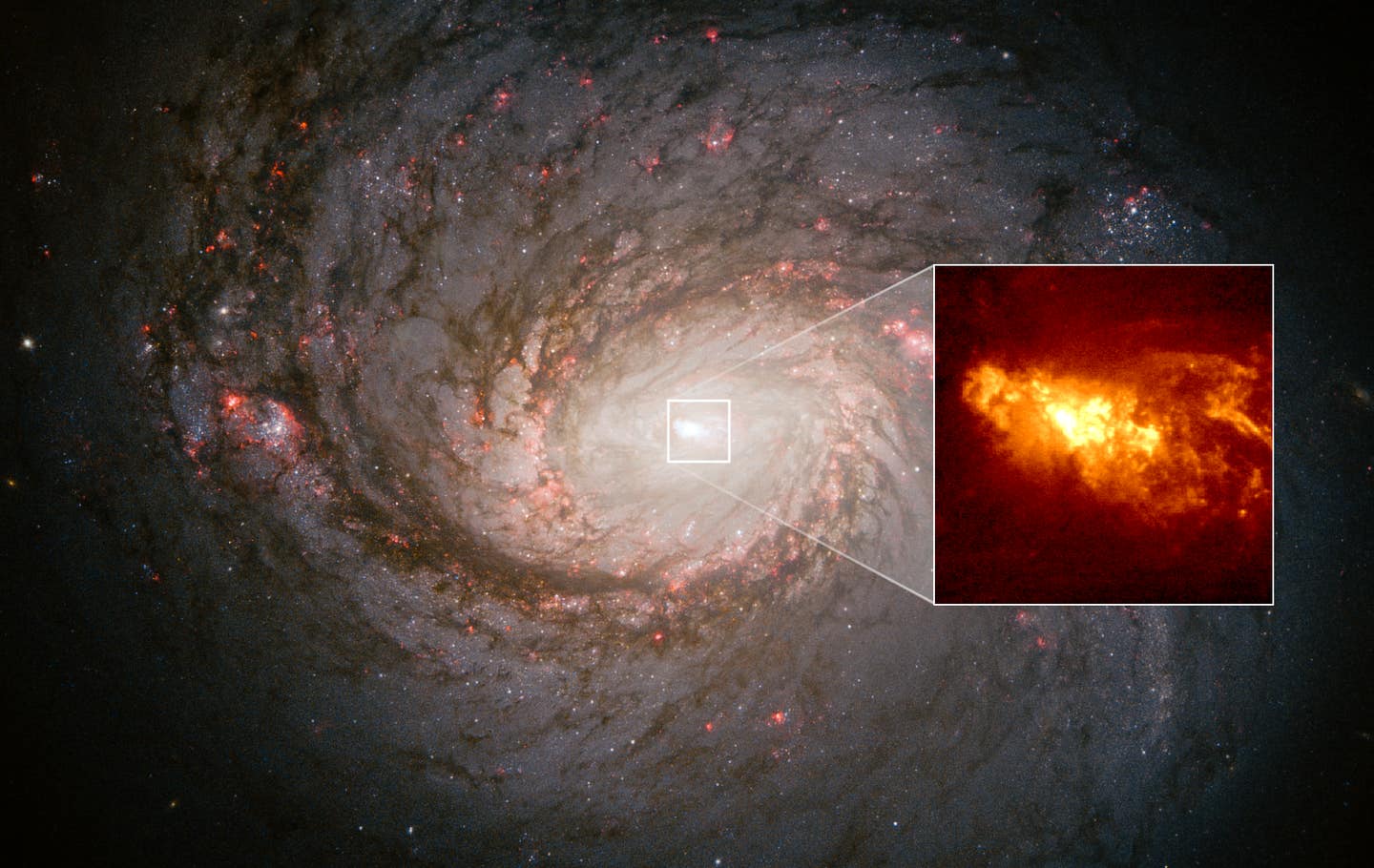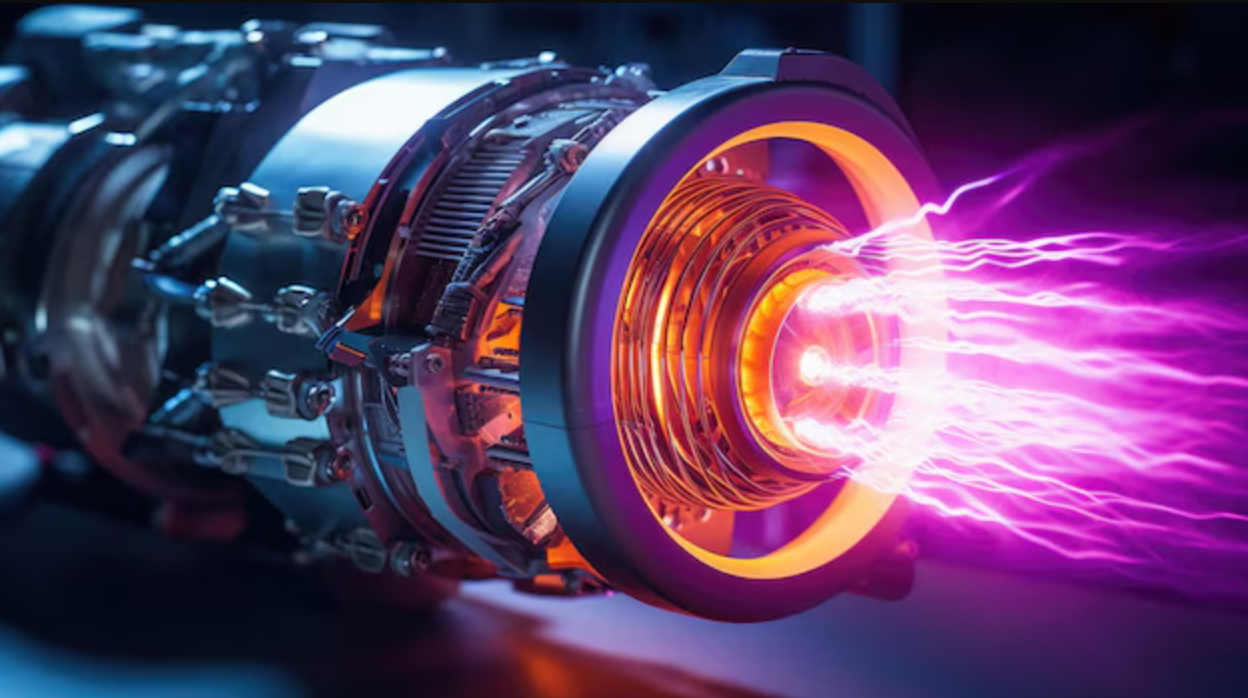Astronomers capture the highest resolution images ever taken of a black hole
High-resolution imaging of active galactic nuclei reveals intricate interactions, driving advances in understanding galaxy evolution.

Scientists achieve the highest-resolution infrared images of active galactic nuclei, uncovering dusty winds and radio jet feedback. (CREDIT: NASA, ESA, Alex Filippenko (UC Berkeley), William Sparks (STScI), Luis C. Ho (KIAA-PKU), Matthew A Malkan (UCLA), Alessandro Capetti (STScI); Image Processing: Alyssa Pagan (STScI)
Active galactic nuclei (AGN) are among the most energetic phenomena observed in the universe. These luminous objects, powered by supermassive black holes at the centers of galaxies, release staggering amounts of energy as matter spirals into their intense gravitational pull.
Researchers continue to probe these enigmatic structures to unravel the mysteries of their life cycles, interactions with host galaxies, and their role in the evolution of the cosmos.
The study of AGN at high spatial resolution is essential for testing the unified AGN model, which aims to explain the observed diversity in AGN appearances. Of particular interest are dusty outflows, which dominate AGN feedback—the process through which AGN influence their host galaxies.
These outflows, propelled by radiation pressure from the intense light near the black hole, impact the surrounding galactic material and create intricate feedback mechanisms.
Simulations suggest that this radiation primarily drives dust in polar directions, creating extended structures that interact dynamically with inflowing material. This phenomenon, often termed a "fountain flow," highlights the complexity of AGN environments.
A prime example of an AGN providing valuable insights is the galaxy NGC 1068. Located a mere 14.4 million parsecs from Earth, this Seyfert 2 galaxy has served as a pivotal laboratory for AGN studies. It has contributed significantly to the development of the unified AGN model.
The galaxy’s proximity and brightness have allowed astronomers to capture high-resolution images across various wavelengths, from near-infrared (NIR) and mid-infrared (MIR) to submillimeter and radio frequencies.
These observations reveal the intricate interplay between the AGN’s structures, including its bent radio jet, dusty molecular material, and hot ionized outflows. However, bridging the gap between small-scale and large-scale structures within AGN remains a formidable challenge.
Related Stories
To address this, researchers have turned to the Large Binocular Telescope Interferometer (LBTI), a cutting-edge instrument located on Mount Graham in Arizona. This device combines the beams of two 8.4-meter mirrors, effectively creating a virtual telescope with a baseline of 22.8 meters.
This configuration enables astronomers to achieve resolution comparable to the next generation of 30-meter class telescopes. The LBTI’s capabilities make it ideal for studying AGN and other extended astronomical objects, such as ultraluminous infrared galaxies and evolved stars.
The team, led by University of Arizona researchers and collaborators from the Max Planck Institute for Astronomy in Germany, recently achieved groundbreaking results using the LBTI. By focusing on NGC 1068, they produced the highest resolution infrared images of an AGN to date.
According to Jacob Isbell, lead author of the study and a postdoctoral research associate at the University of Arizona Steward Observatory, “The Large Binocular Telescope Interferometer can be considered the first extremely large telescope, so it’s very exciting to prove this is possible.”
AGN activity is closely tied to the amount of material falling into the black hole’s accretion disk. If the disk’s glow is particularly bright, the black hole is classified as active. NGC 1068’s AGN is one of the nearest and brightest examples of such activity, making it an ideal candidate for high-resolution imaging. The LBTI observations provided unprecedented clarity, enabling researchers to identify multiple simultaneous phenomena within the AGN environment.
Among the key findings was the detection of a dusty, outflowing wind driven by radiation pressure from the accretion disk. This discovery aligns with theoretical predictions that high-energy photons near the black hole can push dust outward like tiny sails.
Additionally, researchers observed regions of material that appeared significantly brighter than expected. This anomaly was traced to the galaxy’s radio jet, which blasts through surrounding gas and dust, heating it to high temperatures.
The ability to distinguish between these processes marks a significant advancement in AGN research, as previous observations lacked the resolution to separate these complex interactions.
The implications of these findings extend beyond AGN studies. According to Isbell, “This type of imaging can be used on any astronomical object.” The team has already begun applying similar techniques to study disks around stars and the dusty envelopes of evolved stars. By providing high-resolution images of cosmic phenomena, instruments like the LBTI pave the way for future discoveries.
The study also highlights the potential of interferometry in bridging observational gaps. While instruments like the James Webb Space Telescope excel in high-dynamic-range imaging, and facilities like the Very Large Telescope Interferometer (VLTI) offer unparalleled resolution, the LBTI occupies a unique middle ground.
Its 22.8-meter baseline allows for intermediate-contrast imaging of faint targets, making it a valuable complement to other observational tools. The success of the LBTI underscores its importance as a testing ground for techniques that will be employed by upcoming telescopes, such as the Giant Magellan Telescope in Chile.
Understanding AGN feedback is crucial for broader astrophysical studies. Feedback mechanisms, such as radiation pressure and radio jet interactions, play a pivotal role in regulating star formation and shaping galactic evolution. By providing direct evidence of these processes in action, the LBTI observations of NGC 1068 contribute to a deeper understanding of the cosmos.
The research team’s findings were published in the journal Nature Astronomy, further solidifying the significance of their work.
As astronomers continue to refine their observational techniques, the study of AGN promises to yield even more insights into the dynamic and interconnected universe.
Note: Materials provided above by The Brighter Side of News. Content may be edited for style and length.
Like these kind of feel good stories? Get The Brighter Side of News' newsletter.
Joseph Shavit
Head Science News Writer | Communicating Innovation & Discovery
Based in Los Angeles, Joseph Shavit is an accomplished science journalist, head science news writer and co-founder at The Brighter Side of News, where he translates cutting-edge discoveries into compelling stories for a broad audience. With a strong background spanning science, business, product management, media leadership, and entrepreneurship, Joseph brings a unique perspective to science communication. His expertise allows him to uncover the intersection of technological advancements and market potential, shedding light on how groundbreaking research evolves into transformative products and industries.



